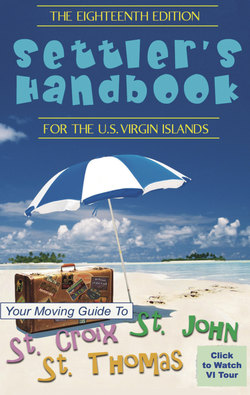Читать книгу VI Settler's Handbook - Mr. Cheyenne Harty - Страница 11
The Danish Era
ОглавлениеOn St. Croix, the Danes established the towns of Christiansted (named for King Christian VI of Denmark) in 1735, and Frederiksted (named for King Frederik V) in 1752. Friederich Moth, governor of the West India Company, designed the town layout for Christiansted and had the island of St. Croix surveyed into 150-acre estates. Moth encouraged settlers, who came from throughout the Caribbean, by offering tax benefits and reasonable land prices. Danish tolerance of ethnicity and religion also helped make the Virgin islands a melting pot, in which English eventually became the common language and Danish the language of the courts. Also spoken was a creole blend of Dutch, African, and later an English dialect, through which slaves and their owners communicated.
A Christiansted gallery
The rules and regulations put forth by the West India Company proved so rigid that the monarchy had to dissolve the company before economic growth could begin.The Danish crown purchased the charter from the West India Company in 1754 and moved the capital from Charlotte Amalie in St. Thomas to Christiansted in St. Croix. Prosperity peaked in the second half of the 18th century with exports of sugar and molasses, rum, hardwoods and cotton. At one point, due to its prodigious agricultural output, St. Croix was called the “garden of the West Indies.”
Danish West Indian architecture is emulated in the territory’s elegant, sturdy, neo-classical buildings that are customized for West Indian weather. The second stories of these structures overhang sidewalks and create shady walkways called “galleries,” which provide cover from both sun and rain. Windows, doors and open spacious rooms take advantage of the tradewinds, and Gutter systems on roofs help catch precious rainwater. The Danes established and rigidly enforced a strict building code for fire protection.
For building materials, Danes and black workers who had purchased their freedom made use of what was available. Yellow bricks from Danish ship ballasts were incorporated in much construction. And plantations were built mostly with coral quarried from the sea.
The islands of the West Indies played a significant role in the development of North America. Alexander Hamilton, the first Secretary of the U.S. Treasury, who wrote the Federalist Papers, began his career on St. Croix in a shipping firm owned by a New Yorker. The wealth and social status achieved by prominent island families appealed to colonial families in Philadelphia, New York and Charleston. Close family connections and trade would eventually help develop a natural friendship between the islands and the continent. And during the American Revolution the neutrality and freeport status of the Danish Virgins were important financial assets to the rebellious thirteen colonies. It is hence not surprising that the first salute from foreign soil to American independence was fired from Fort Frederik, St. Croix in 1776. Perhaps it is only fitting that the Virgin Islands now rest under America’s Stars and Stripes.
